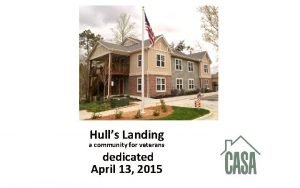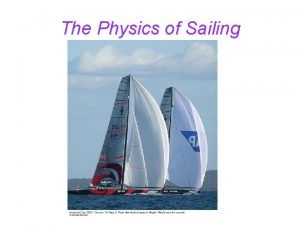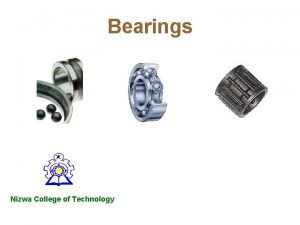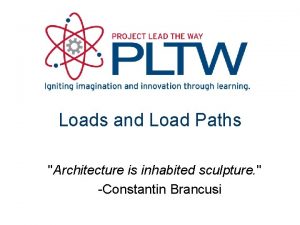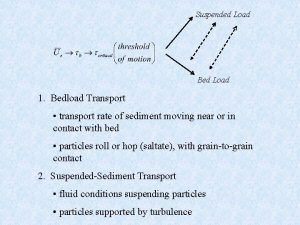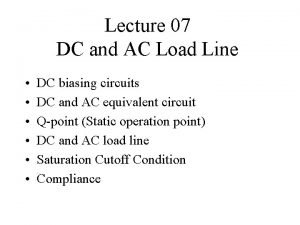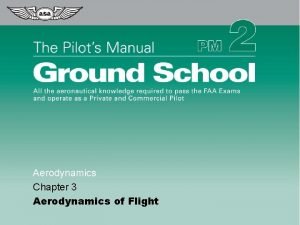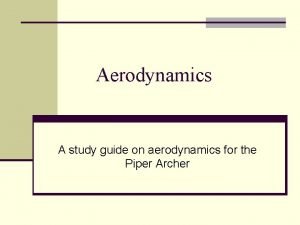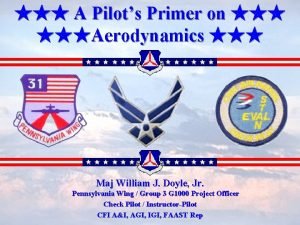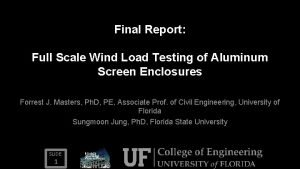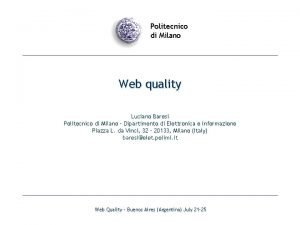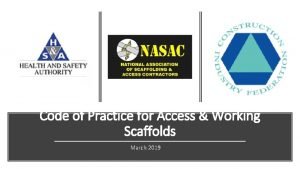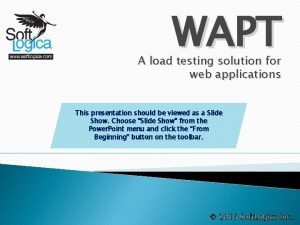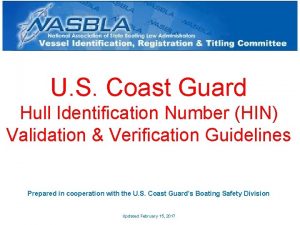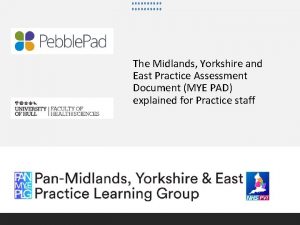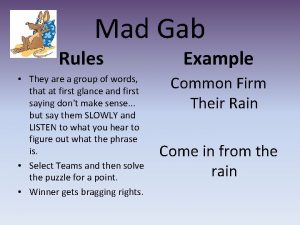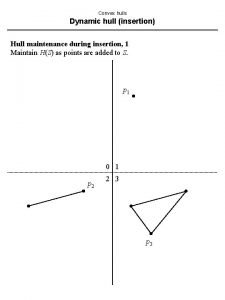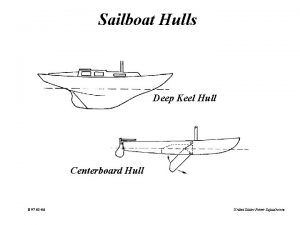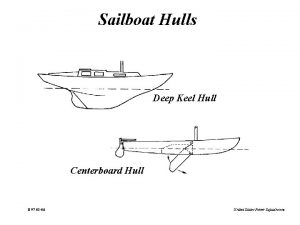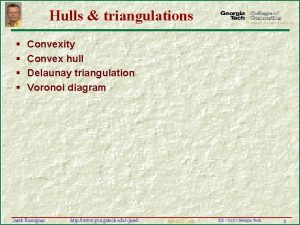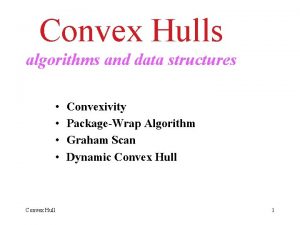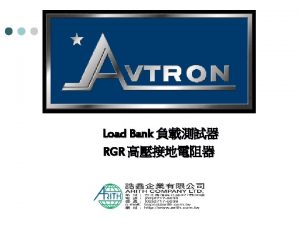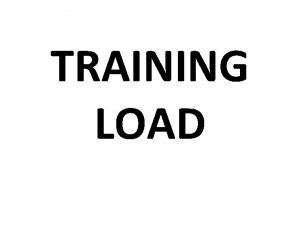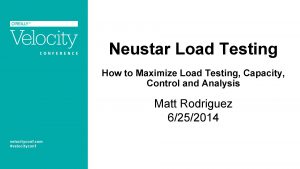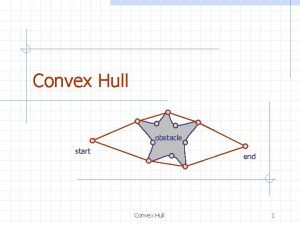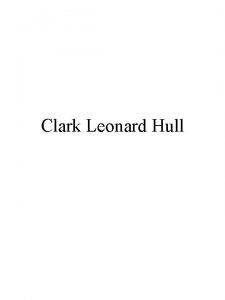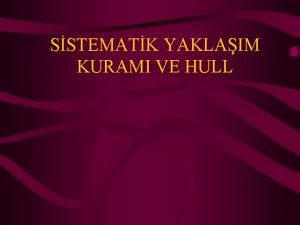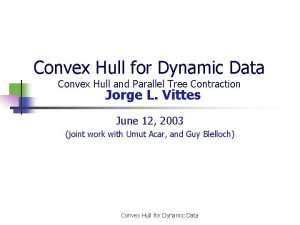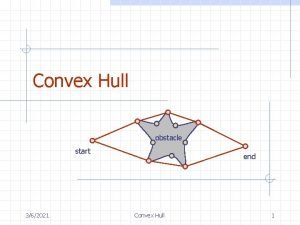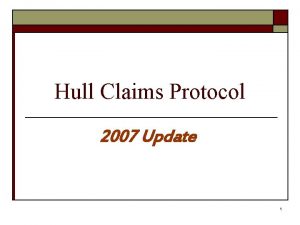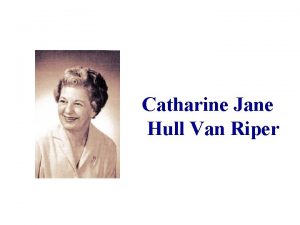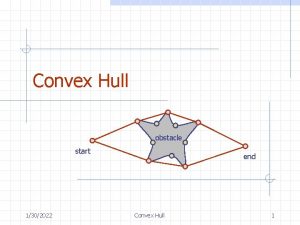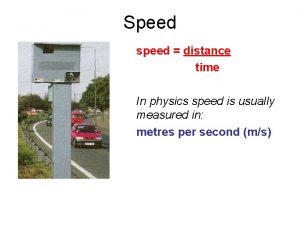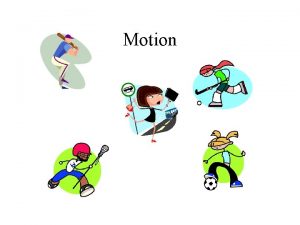Load Testing Speed Testing Types of Hulls Hull
























- Slides: 24


“Load” Testing

“Speed” Testing

Types of Hulls Hull - the watertight body of the boat that separates the load from the waters Plane Waterline Draft

Flat-bottom

Flat-bottom Positive Aspects Negative Aspects • Stable • Planes high (shallow draft) • Can carry heavier loads (if distributed properly) • Slow moving • High Center of Gravity (can tip easily) • Must be loaded properly (equally distributed)

Flat-bottom

“V” Bottom

“V” Bottom Positive Aspects Negative Aspects • Faster • Planes lower (deeper draft) • Less stable • Lower Center of Gravity (does not tip as easily) • Must be loaded properly (equally distributed)

“V” Bottom

Catamaran

Catamaran Positive Aspects Negative Aspects • Faster than Flat bottom, slower than “V” hull • Planes higher than “V” hull, lower than Flat bottom • Carries more load than “V” hull, less than Flat bottom • Less stable than Flat bottom, more stable than “V” hull • Medium Center of Gravity • Must be loaded properly (equally distributed)

Catamaran

Tri-Hull

Tri-Hull Positive Aspects Negative Aspects • Stable • Fast • Carries more load than traditional “V” hull designs (but less than Flat bottom or Catamaran designs) • Slower than traditional “V” hull designs • Difficult to fabricate • Medium Center of Gravity • Must be loaded properly (equally distributed)

Tri-Hull

Front/Back – Top View Square Design “V” Shaped Design Tapered Design Curved Design

Front/Back – Side View Square Design Tapered Design “V” Shaped Design Curved Design

Key Terms Hydrodynamics - the natural science of fluids (liquids and gases) in motion. “Hydro” (of or pertaining to water), dynamics (a force that is constantly changing). A sub-discipline of fluid mechanics that deals with fluid flow or how fluids react when they come in contact with other objects. Displacement - In fluid mechanics, displacement occurs when an object is immersed in a fluid, pushing it out of the way and taking its place. An object that sinks displaces an amount of fluid equal to the object's volume. Buoyancy - is an upward acting force exerted by a fluid, that opposes an object's weight. If the object is either less dense than the liquid or is shaped appropriately (as in a boat), the force can keep the object afloat.

Key Terms Draft - is the vertical distance between the waterline and the bottom of the hull (keel). The depth of water that a boat hull draws. The draft can also be used to determine the weight of the cargo on board by calculating the total displacement of water and then using Archimedes' principle.

Key Terms Center of Gravity - is a geometric property of any object. The center of gravity is the average location of the weight of an object. The higher the Center of Gravity the greatest the chance of tipping over, the lower the Center of Gravity the lower the chance to tipping.



 Drive reduction
Drive reduction Hull's landing
Hull's landing Hull speed
Hull speed Axial load and radial load
Axial load and radial load Tributary load and load path
Tributary load and load path Suspended load definition
Suspended load definition Ac load line
Ac load line Stall speed increase with bank angle
Stall speed increase with bank angle Forward cg vs aft cg
Forward cg vs aft cg Stall speed and load factor
Stall speed and load factor How to find time with distance and speed
How to find time with distance and speed A narrow field of vision (140 degrees or less) is called
A narrow field of vision (140 degrees or less) is called Speed detection of moving vehicle using speed cameras ppt
Speed detection of moving vehicle using speed cameras ppt Asp net load testing
Asp net load testing Wind load testing
Wind load testing Luciano baresi polimi
Luciano baresi polimi Storm runner load testing
Storm runner load testing Load testing standards
Load testing standards Load testing browsermob
Load testing browsermob Difference between performance and load testing
Difference between performance and load testing Wapt testing
Wapt testing Uscg hull identification number search
Uscg hull identification number search Jane d hull elementary
Jane d hull elementary Myepad
Myepad Ace heal ink van
Ace heal ink van

